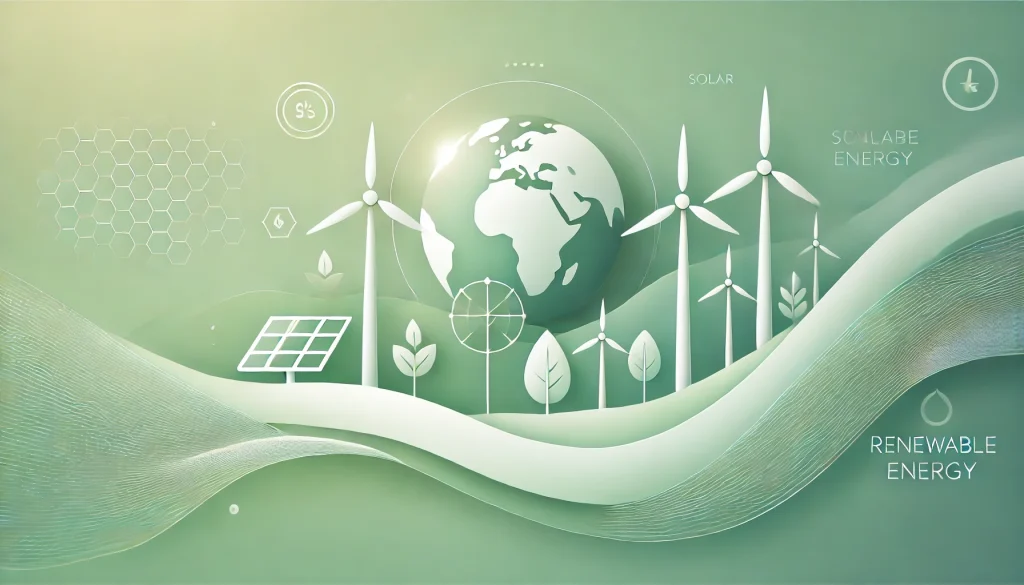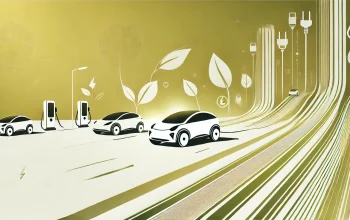The Role of Renewable Energy in Combating Climate Change

Introduction
Climate change has emerged as one of the most pressing global challenges of our time. From rising sea levels and unpredictable weather patterns to the destruction of ecosystems, its impacts are both widespread and devastating. At the heart of this crisis is the rapid accumulation of greenhouse gases (GHGs), primarily from burning fossil fuels such as coal, oil, and natural gas. The solution? A transition to renewable energy sources. This article delves into the critical role renewable energy plays in combating climate change and highlights why this transition is essential for a sustainable future.
Table of Contents
Understanding Climate Change
Before exploring renewable energy, it’s essential to understand the root cause of climate change. When we burn fossil fuels for energy, carbon dioxide (CO2) and other GHGs are released into the atmosphere. These gases trap heat from the sun, causing the Earth’s temperature to rise—a phenomenon known as the greenhouse effect. Since the Industrial Revolution, human activities have increased atmospheric CO2 levels by more than 40%, leading to unprecedented warming.
According to the Intergovernmental Panel on Climate Change (IPCC), global temperatures have already risen by 1.1°C compared to pre-industrial levels. If emissions continue unchecked, we could see temperature increases of 3°C or more by the end of this century, with catastrophic consequences for ecosystems, human health, and global economies.
The Need for Renewable Energy
To mitigate climate change, we need to significantly reduce our carbon emissions. One of the most effective ways to do this is by transitioning away from fossil fuels and toward renewable energy sources. These sources—solar, wind, hydropower, geothermal, and biomass—are sustainable, abundant, and produce little to no GHG emissions.
Renewable energy is not just about reducing emissions; it’s also about energy security, economic growth, and resilience. By investing in clean energy technologies, we can create new industries, generate jobs, and reduce dependence on finite and geopolitically unstable fossil fuel supplies.
Types of Renewable Energy and Their Impact on Climate Change
- Solar Energy
- How It Works: Solar panels convert sunlight into electricity using photovoltaic (PV) cells. Solar thermal technologies harness the sun’s heat for power generation or direct heating.
- Impact on Climate Change: Solar energy is one of the cleanest and most abundant renewable energy sources available. By displacing fossil fuel-based power, it significantly reduces carbon emissions. According to the National Renewable Energy Laboratory (NREL), solar energy could prevent the release of billions of tons of CO2 over the coming decades.
- Challenges: Despite its benefits, solar energy faces hurdles such as intermittency (it only works when the sun is shining), storage issues, and the high initial cost of installation. However, advancements in energy storage and decreasing costs are making solar more accessible.
- Wind Energy
- How It Works: Wind turbines use the kinetic energy of the wind to spin blades that generate electricity. Wind farms can be located on land or offshore, where wind speeds are typically stronger.
- Impact on Climate Change: Like solar, wind power produces zero emissions during operation. The Global Wind Energy Council estimates that wind energy could reduce global CO2 emissions by more than 1.5 billion tons annually by 2030.
- Challenges: Wind energy is also intermittent, and wind farms require large amounts of land. Offshore wind farms can mitigate some of these issues, but they are more expensive to build and maintain.
- Hydropower
- How It Works: Hydropower generates electricity by using the flow of water, typically from a dam or a river, to spin a turbine.
- Impact on Climate Change: Hydropower is the largest source of renewable electricity worldwide, providing about 16% of global electricity production. It produces no direct emissions, but there are concerns about methane emissions from reservoirs, especially in tropical areas.
- Challenges: While hydropower is reliable and cost-effective, it can have significant environmental impacts. Building dams can disrupt ecosystems, displace communities, and affect water quality. There’s also the issue of drought, which can reduce the availability of water for power generation.
- Geothermal Energy
- How It Works: Geothermal energy taps into the Earth’s internal heat, using steam or hot water reservoirs beneath the Earth’s surface to generate electricity or provide direct heating.
- Impact on Climate Change: Geothermal energy is a stable and reliable source of power, with the potential to provide baseload electricity with minimal emissions. However, geothermal plants can release small amounts of greenhouse gases trapped underground, although these emissions are significantly lower than those from fossil fuels.
- Challenges: Geothermal energy is location-dependent, meaning it can only be harnessed in regions with suitable geological conditions. High upfront costs and the potential for induced seismic activity are other challenges.
- Biomass Energy
- How It Works: Biomass energy is produced by burning organic materials, such as wood, agricultural residues, and waste, to generate electricity or heat. It can also be converted into biofuels for transportation.
- Impact on Climate Change: Biomass is considered carbon neutral because the CO2 released during combustion is offset by the CO2 absorbed by plants during their growth. However, the net impact depends on the source of the biomass and how it’s managed. Unsustainable practices, such as deforestation for biomass production, can lead to increased emissions.
- Challenges: The main challenge with biomass is ensuring sustainability. Overharvesting of forests or improper land use can negate the environmental benefits of this renewable energy source.
The Global Shift Toward Renewable Energy
In recent years, there has been a significant shift toward renewable energy worldwide. Governments, businesses, and individuals are recognizing the urgency of addressing climate change and are increasingly investing in clean energy technologies. Some of the most notable trends include:
- Policy Support and International Agreements
- The Paris Agreement, adopted in 2015, marked a turning point in the global fight against climate change. Under this agreement, nearly every country committed to reducing their GHG emissions to limit global warming to well below 2°C, with efforts to keep it to 1.5°C.
- Many countries have since implemented national policies to support renewable energy, such as feed-in tariffs, tax incentives, and renewable energy targets. For example, the European Union aims to achieve a 32% share of renewable energy in its total energy mix by 2030, while the U.S. has set ambitious goals to transition to 100% clean electricity by 2035.
- Declining Costs of Renewable Technologies
- Over the past decade, the cost of renewable energy technologies has plummeted, making them increasingly competitive with fossil fuels. The cost of solar PV modules has dropped by more than 90% since 2010, while wind power costs have fallen by about 70%.
- As prices continue to decline, renewables are becoming the cheapest source of new power generation in many parts of the world. This is driving a rapid expansion of renewable energy capacity, particularly in developing countries, where clean energy investments are outpacing those in fossil fuels.
- Corporate Commitments to Clean Energy
- Many businesses are also taking action to reduce their carbon footprints by investing in renewable energy. Tech giants like Google, Apple, and Amazon have committed to powering their operations with 100% renewable energy, while automakers like Tesla and General Motors are leading the shift toward electric vehicles (EVs) powered by clean energy.
- These corporate commitments not only help to reduce emissions but also drive innovation and economies of scale in renewable energy technologies, further lowering costs and accelerating the transition to a low-carbon future.
The Challenges of Scaling Up Renewable Energy
While the progress in renewable energy is promising, there are still several challenges that need to be addressed to fully realize its potential in combating climate change.
- Energy Storage and Grid Integration
- One of the biggest challenges with renewable energy, particularly solar and wind, is that it is intermittent—electricity is only generated when the sun is shining or the wind is blowing. To ensure a stable and reliable energy supply, we need advanced energy storage solutions, such as batteries, to store excess electricity for use when demand is high or generation is low.
- Additionally, integrating large amounts of renewable energy into existing power grids requires significant upgrades to infrastructure. Smart grids, which can manage the variable nature of renewables, will be essential for balancing supply and demand and preventing blackouts.
- Land and Resource Constraints
- Renewable energy projects, especially wind and solar farms, require large amounts of land. Finding suitable locations that don’t conflict with agriculture, wildlife habitats, or urban development can be challenging, particularly in densely populated areas.
- Furthermore, the materials required for renewable energy technologies, such as lithium for batteries and rare earth metals for wind turbines, are finite and often come with environmental and social concerns related to mining and extraction.
- Political and Economic Barriers
- The transition to renewable energy is not just a technological challenge; it’s also a political and economic one. Many countries are heavily dependent on fossil fuels for their energy needs and face significant resistance from entrenched industries and political interests.
- Fossil fuel subsidies, which amounted to over $500 billion globally in 2019, continue to distort energy markets and hinder the growth of renewables. Phasing out these subsidies and implementing carbon pricing mechanisms will be crucial for leveling the playing field and accelerating the clean energy transition.
Conclusion
The role of renewable energy in combating climate change cannot be overstated. As the world races to meet the targets set by the Paris Agreement, the shift away from fossil fuels and toward renewable energy is critical to reducing carbon emissions and limiting global warming. While challenges remain, the continued decline in renewable energy costs, coupled with growing political, corporate, and public support, offers
hope for a cleaner, more sustainable future.
By investing in renewable energy, we not only mitigate the worst effects of climate change but also create a more resilient, equitable, and prosperous world for generations to come. The transition is not without its hurdles, but the stakes are too high to delay. The time to act is now.


